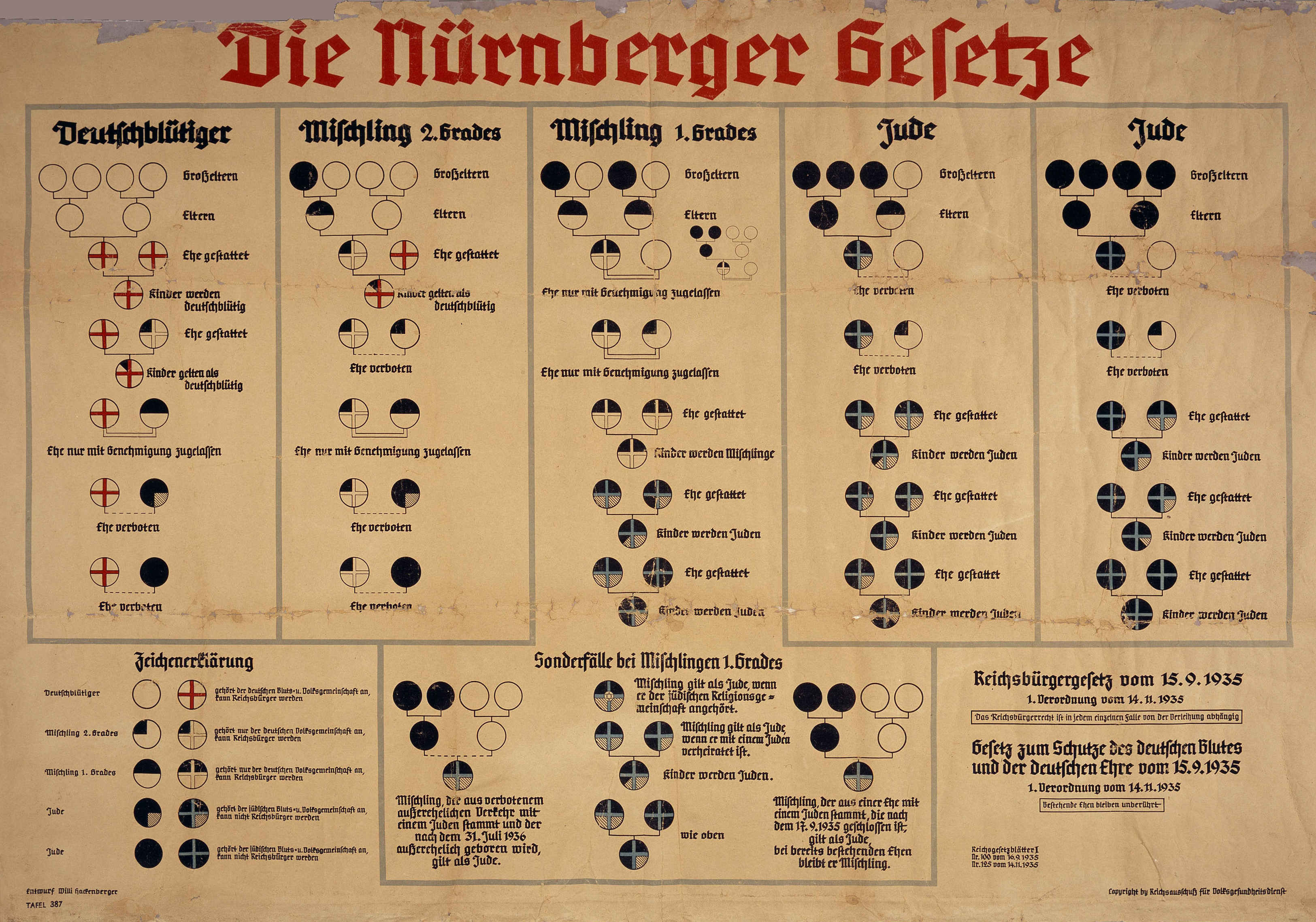first-degree Jewish Mischling (Q221018): Difference between revisions
Jump to navigation
Jump to search
Olaf Simons (talk | contribs) (Changed [de] description: Nach dem Reichsbürgergesetz vom 14. November 1935: Deutsche, die von zwei 'volljüdischen' Großeltern abstammten, jedoch keine weitergehende Bindung zum Judentum hatten – später wurde dafür der Begriff 'Geltungsjude' benutzt.) |
Olaf Simons (talk | contribs) (Changed [en] description: According to the Reich Citizenship Act of November 14, 1935: Germans who were descended from two 'fully Jewish' grandparents, but had no further connection with Judaism - the term "valid Jew" (Geltungsjude) was later used for this.) |
||
| description / en | description / en | ||
According to the Reich Citizenship Act of November 14, 1935: Germans who were descended from | According to the Reich Citizenship Act of November 14, 1935: Germans who were descended from two 'fully Jewish' grandparents, but had no further connection with Judaism - the term "valid Jew" (Geltungsjude) was later used for this. | ||
Revision as of 19:10, 19 February 2021
According to the Reich Citizenship Act of November 14, 1935: Germans who were descended from two 'fully Jewish' grandparents, but had no further connection with Judaism - the term "valid Jew" (Geltungsjude) was later used for this.
- Half-Jew
- first-degree Jewish hybrid
| Language | Label | Description | Also known as |
|---|---|---|---|
| English | first-degree Jewish Mischling |
According to the Reich Citizenship Act of November 14, 1935: Germans who were descended from two 'fully Jewish' grandparents, but had no further connection with Judaism - the term "valid Jew" (Geltungsjude) was later used for this. |
|
